Unmatched Adventures: Tales to Amaze makes for fantastic cooperative play
In Unmatched Adventures: Tales to Amaze, up to four players will act cooperatively to tackle a couple of nefarious villains (and their minions) from popular pulp fiction. With a distinctly mid-20th century feel, Unmatched Adventures: Tales to Amaze adds Annie Christmas, Nikola Tesla, The Golden Bat and Dr Jill Trent to the Unmatched roster, but that’s not the real story here — because Unmatched Adventures: Tales to Amaze is all about the bad guys!
Retaining the basic Unmatched ruleset and allowing for full interoperability with other sets, Unmatched Adventures: Tales to Amaze is relatively simple to pick up and play, and because it’s cooperative, everyone can help each other through the first few games. The first step is always to pick a character and take their deck of cards, miniature, health dial and possibly sidekick(s) or tokens.
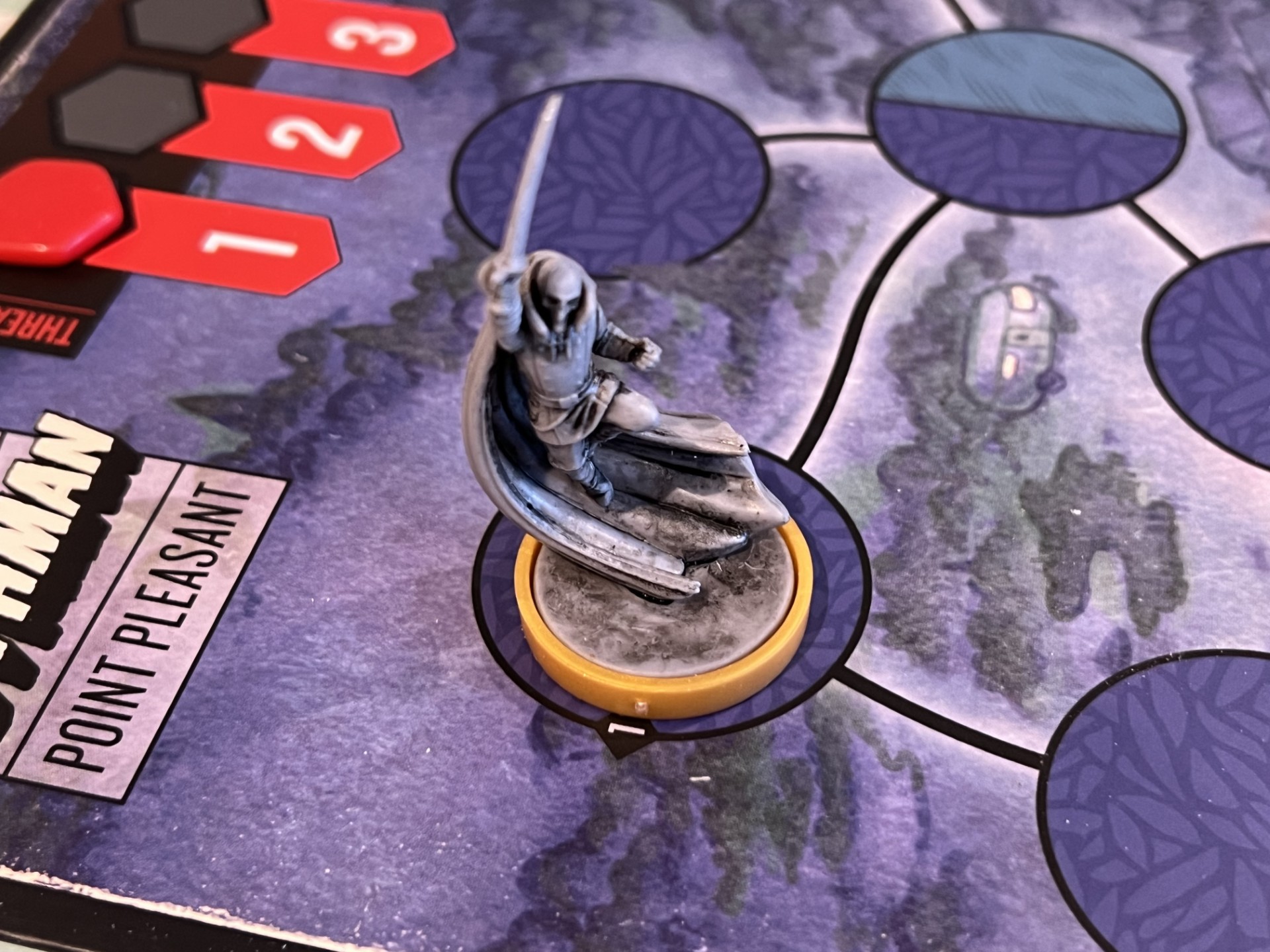
On their turn, a player simply takes two actions from a set of three — they can either maneuver, plot or attack. The maneuver action allows them to move their hero and any sidekicks and to draw a single card. Plotting allows them to play a plot card (shown with a lightning bolt), and attacking does what it says on the tin — allowing a character to attack an opposing target.
In most Unmatched games, one player faces off against another to see which hero is more powerful — with a few additional rules in place to allow three or four player matches. In Unmatched Adventures: Tales to Amaze however, the game is the opponent, with one side of the board featuring the story of the Mothman, and the other asking the players to tackle a Martian invasion.
Whilst either the Mothman or the Martians will act as the main enemy (and it is their nefarious plan that must be stopped) there will also be one minion supporting them for each player in the game. These minions include the likes of the Loveland Frog — who is quite weak in combat but will gain lots of activations — or the Ant Queen, who uses pheromones to confuse and debilitate the player characters.
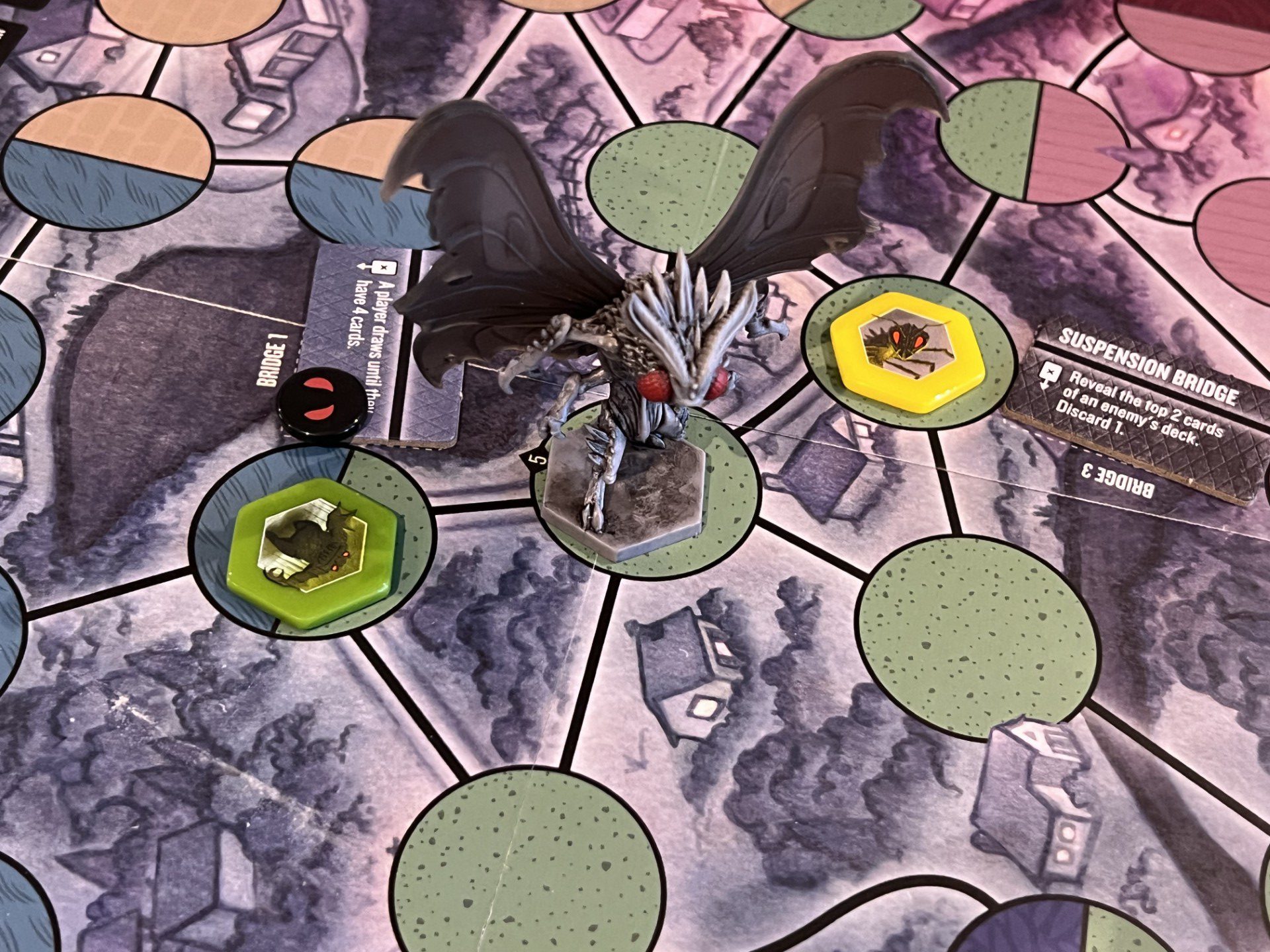
In mechanical terms, these enemies operate in a way that is just as simple as the core rules that drive the player characters. An initiative deck featuring cards from every player and every enemy is used to decide the current turn, and whilst every character gets one activation per round by default, characters like the Loveland Frog can gain additional activations that are added to this deck.
When a villain or minion card is drawn, the players will follow some simple AI rules — either moving the beast towards the nearest player and attacking if possible, advancing the threat track (which moves the bad guys closer to resolving their mission) or possibly doing something specific to that character.
When combat between a player and a villain or minion occurs (regardless of who attacks) then the player will first flip over their attack or defence card, and then draw one from the relevant enemy deck and flip that. Every enemy card has an attack and defence value on it, and usually they’ll also have an effect. As with any other combat, the attack value is compared against the defence one and damage is dealt — subject to any modifiers written in the before, after or during combat text.
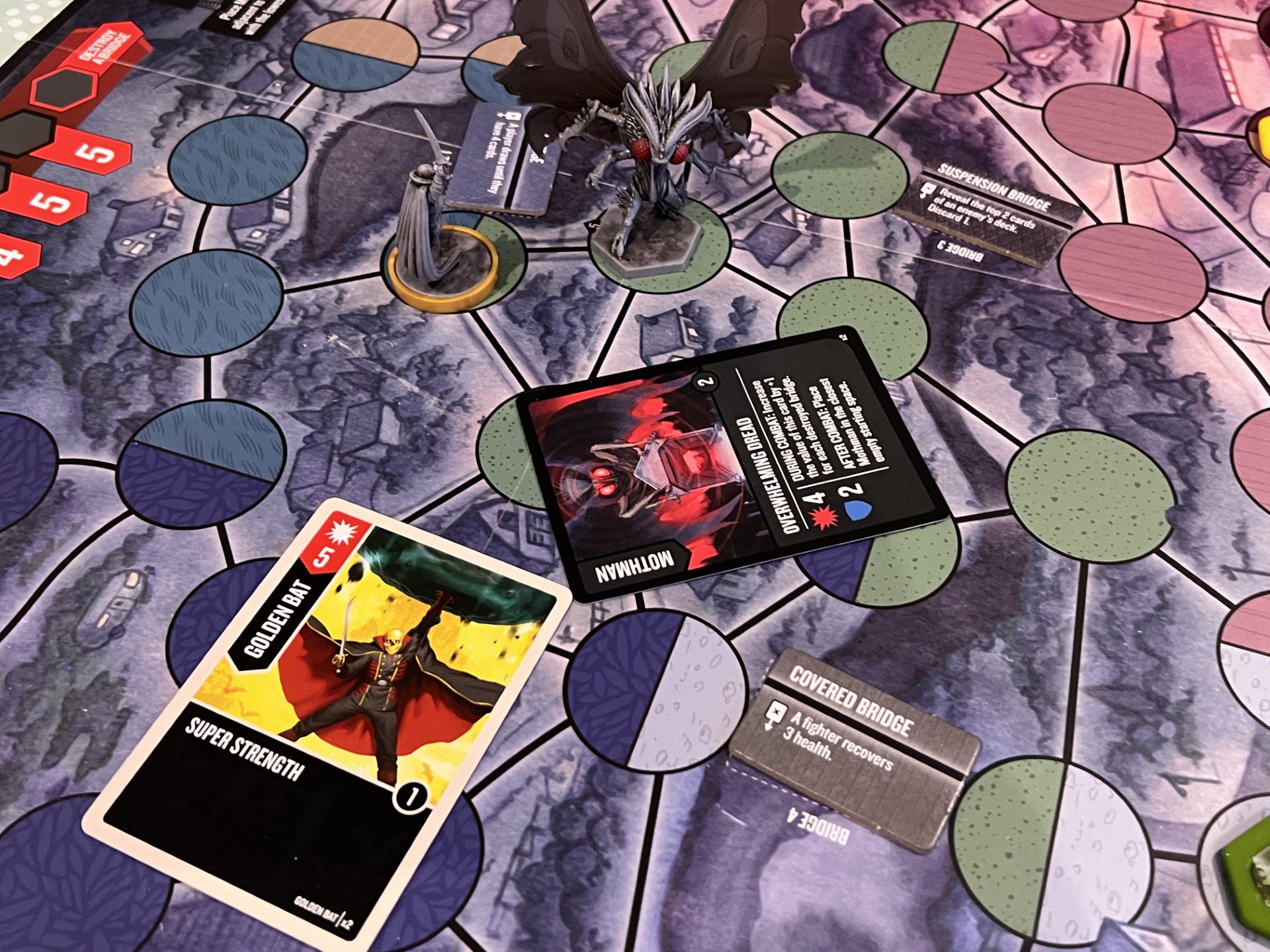
Both the Mothman and the Martian make for interesting opponents, with big, fantastic miniatures that have real board presence. The minions are represented by tokens (the same as sidekicks) and whilst they are nowhere near as impressive as the models, it’s still nice to see consistent use of the plastic tokens that we see in other Unmatched sets.
The instruction booklet suggests that the Mothman is the easier opponent, but depending on the minions you draw (or choose) he can still be quite tough to beat. With an objective to destroy various bridges across the board, the Mothman escalates his threat track quickly, and is fairly dangerous in combat with the heroes. The Martian Invader works very differently, and I did find it much harder to play against, thanks largely to its additional mobility and focus on the players.
Where the four new hero characters come into it, I feel it’s a bit of a mixed bag. I actually like all the characters in terms of how they play (especially Tesla and Jill Trent with their gadget-based approach) but aside from Tesla, I’d never really heard of any of these. That said, Google is more than happy to throw up various stories about these characters and as I said before, they all belong to stories and comics from somewhere between 1930 and about 1960 — which fits the theme in Unmatched Adventures: Tales to Amaze to a tee.
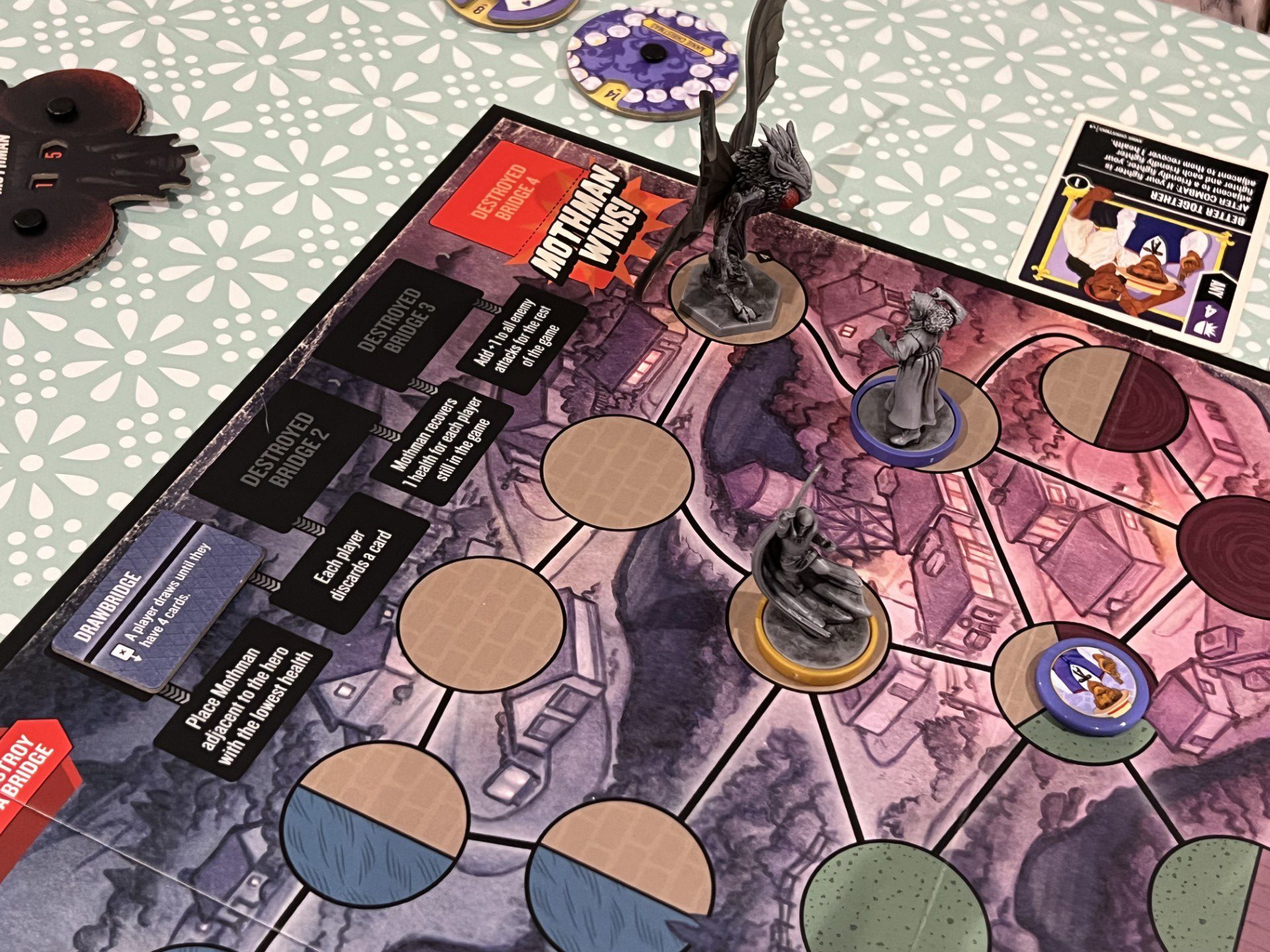
I wish there had been more villains and fewer player characters in Unmatched Adventures: Tales to Amaze, because I really enjoyed playing against these bad guys with characters both in the Unmatched Adventures: Tales to Amaze set and those from other sets. Bringing Deadpool, Squirrel Girl, Robin Hood or even the T-Rex into your games of Unmatched Adventures: Tales to Amaze is a big part of the experience, and it’s the combinations that make the game fun.
There is a clear need for four playable characters in Unmatched Adventures: Tales to Amaze to make it standalone as a product, so I guess I will simply have to wait for a sequel to get even more variety. Having said that, I have nowhere near defeated this game with every combination of villains and minions, and nor have I used the four hero characters in head to head games of Unmatched as much as I should.
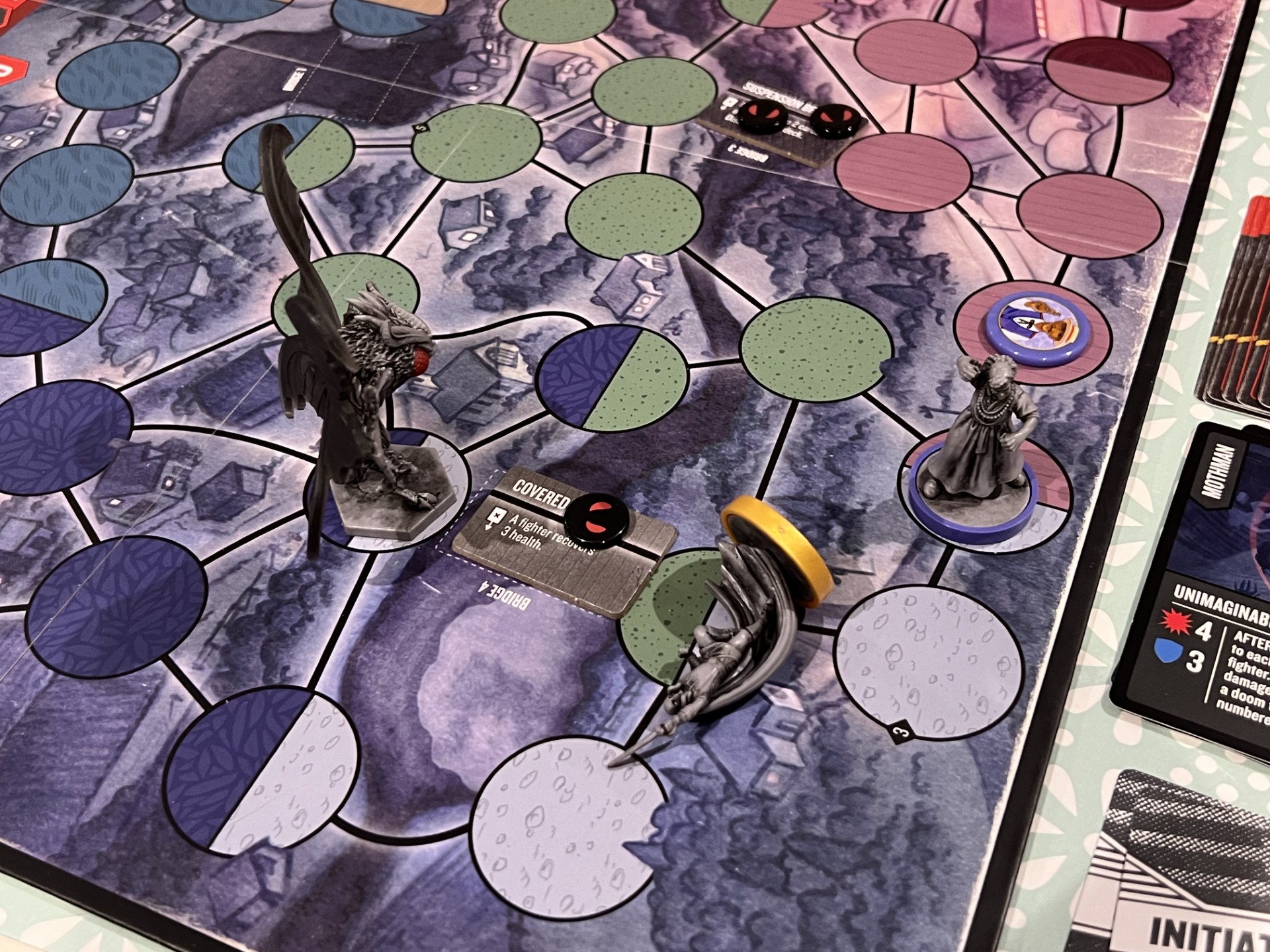
Unmatched Adventures: Tales to Amaze is an excellent addition to your Unmatched collection, especially if you have players in your group who are less keen on head to head games. My eldest daughter, for example, much prefers Unmatched Adventures: Tales to Amaze to Unmatched because she doesn’t like conflict. That’s fair enough, and as a result, we both love Unmatched Adventures: Tales to Amaze and there’s a good chance you will too.
You can purchase Unmatched Adventures: Tales to Amaze on Amazon.
Comments are closed.